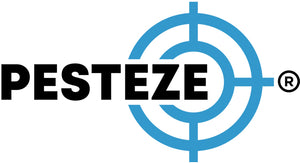KEEP YOUR FLOWERS SAFE – STOP GALL MIDGE INFESTATIONS!

KEEP YOUR FLOWERS SAFE – STOP GALL MIDGE INFESTATIONS!
Summary
Gall midges are tiny flies whose larvae damage flower buds and shoots, causing distorted growth and reduced blooms. They often go unnoticed until damage is severe. This guide explains how to prevent gall midge infestations and keep your flower beds thriving.
Features
-
Inspect Plants Regularly: Catch early signs of bud or shoot damage.
-
Remove Infested Growth: Prune and destroy affected buds or stems.
-
Encourage Beneficial Insects: Attract predators like predatory mites and parasitic wasps.
-
Improve Air Circulation: Space plants to reduce humidity that midges love.
-
Apply Natural Repellents: Use neem oil or insecticidal soap sprays.
-
Maintain Clean Flower Beds: Remove debris where midges may pupate.
Guide Description
Gall midges are small, delicate flies whose larvae burrow into flower buds and young shoots, causing stunted growth, deformed blooms, and reduced flowering. They are especially problematic for ornamental plants such as roses, chrysanthemums, and geraniums.
Step 1: Monitor for Early Signs
Check your flower beds regularly, especially in spring and early summer. Look for buds that fail to open, turn brown, or appear misshapen.
Step 2: Prune Infested Material
As soon as you spot damaged buds or stems, remove them and dispose of them in sealed bags. Do not compost, as larvae may survive and reinfest.
Step 3: Attract Natural Predators
Encourage beneficial insects like lady beetles, predatory mites, and parasitic wasps by planting nectar-rich flowers such as dill, alyssum, and marigolds nearby.
Step 4: Improve Garden Conditions
Gall midges thrive in humid, stagnant air. Space plants to improve airflow and water early in the day so foliage dries quickly.
Step 5: Use Natural Repellents
Neem oil and insecticidal soaps can deter adult midges and kill exposed larvae. Apply according to label directions, focusing on flower buds and young shoots.
Step 6: Keep Beds Clean
Clear away fallen leaves, spent flowers, and plant debris where pupae can overwinter. A tidy garden reduces breeding sites for pests.
With consistent monitoring, quick removal of infested growth, and supportive garden practices, you can prevent gall midges from taking over your flower beds.
Other Tips
-
Rotate plant varieties to disrupt pest life cycles.
-
Avoid over-fertilizing, which can encourage soft new growth attractive to midges.
-
Use fine mesh covers over vulnerable plants during peak midge activity.
Conclusion
Gall midges can be a serious threat to ornamental flowers, but prevention is possible with regular inspection, good sanitation, and natural pest control. A healthy, well-maintained garden is your best defense.
- saneeth thota


Comments 0